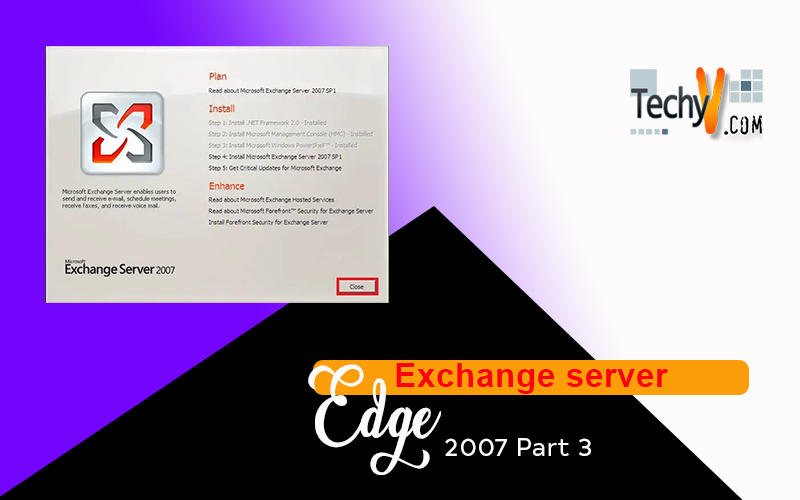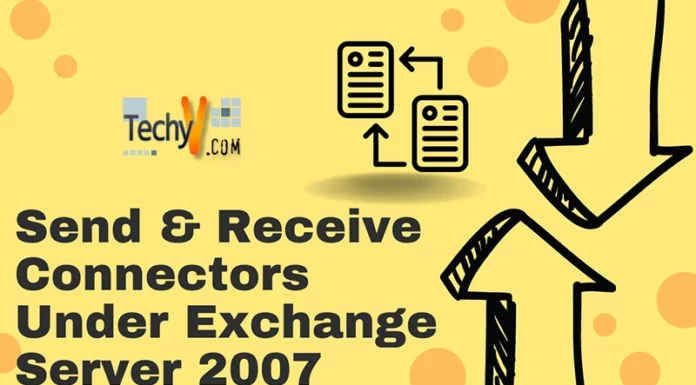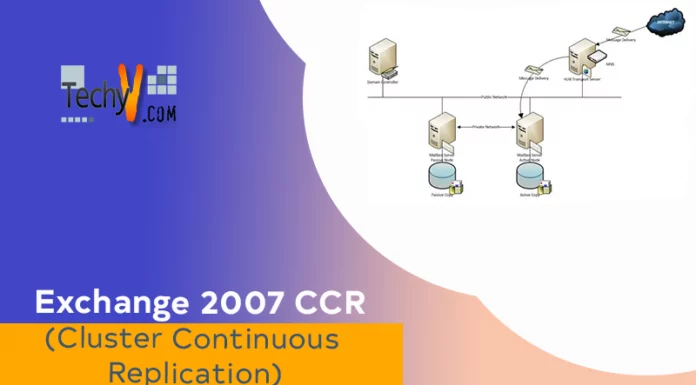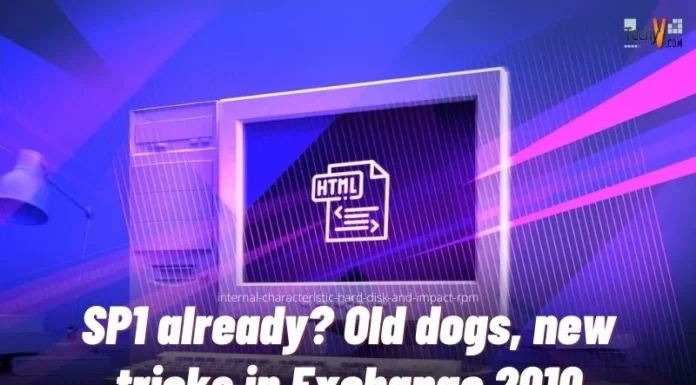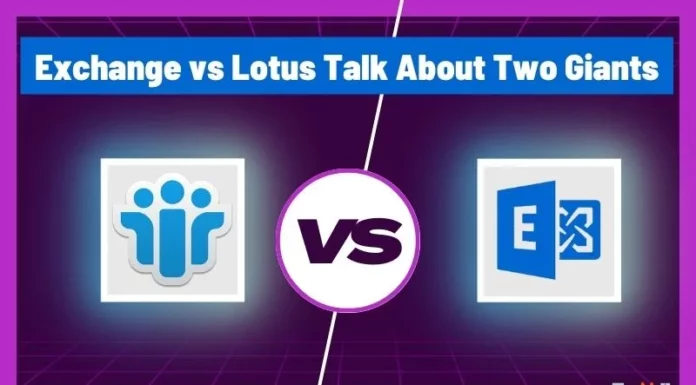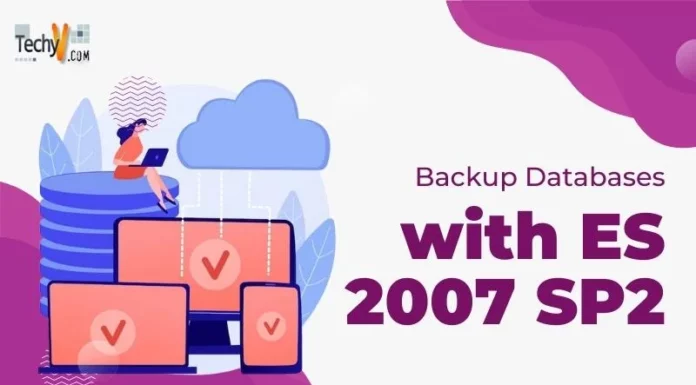Exchange server Edge 2007 Part 3
What is Edge Server?
Edge server role is one of the 5 email server roles introduced in Microsoft Exchange 2007. This server role is responsible for the email delivery and receiving to and from internet.
What Does Edge Server Do?
An Edge Server’s basic function is to provide an entry and exit point for all emails sent and received from the organization. Emails coming through Microsoft Outlook, Outlook Web Access (OWA), and Outlook Anywhere (OAW) versions 2003, 2007 & 2010, Windows Mobile devices or any other smart phones using Active Sync have to pass through the EDGE server as directed by the HUB server if they are outbound or inbound.
For internal emails EDGE server is not used.
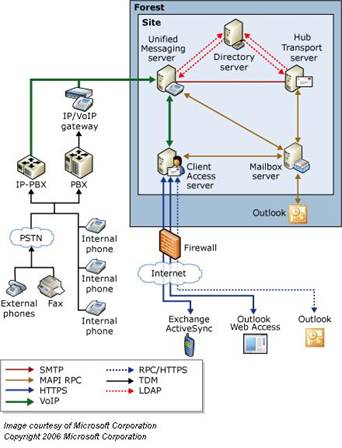
Deployment Considerations
Depending on the hardware’s availability and utilization requirements EDGE server is installed on a separate physical or virtual machine and it cannot be deployed on the same physical or virtual machines having Mailbox and Hub server roles.
Edge Server requires communication with the outside world through the internet so generally it is placed in DMZ in a corporate network.
Installation
There are few pre-requisites to be followed for installation of CAS server role.
Who can Install Edge Server?
A user installing Edge server must be a member of the following groups
- Local Administrator
However Enterprise Admin rights are a requirement to run some commands on HUB server and Domain Admin rights are required to make some entries in the DNS server.
What are the Hardware Requirements?
An Edge Server role requires 64 bit processor architecture.
It can be installed on any Pentium-IV, Xeon or AMD Athalon based processor.
EDGE requires 2GB of RAM per processor core.
For every message additional 3KB of RAM is also required as queue overhead
1.2 GB free space available on installation drive and 200 MB free space on system drive
The File system must be formatted as NTFS on both drives
Are there Any Network Requirements?
EDGE Server plays a critical role being the front end server of an exchange 2007 based organization. Following port settings are a must for smooth working of an EDGE Server
| Network Interface | Port Number | Protocol |
| Inbound and outbound to the Internet | 25/TCP | SMTP |
| Inbound and outbound to the internal network | 25/TCP | SMTP |
| Local | 50389/TCP | LDAP |
| Inbound from the internal network | 50636/TCP | Secure LDAP |
| Inbound from the internal network | 3389/TCP | RDP |
What are the Software Requirements?
The Operating system must be Windows Server 2003 64bit with SP1 or higher
The Operating system must be fully patched and antivirus installed with latest definition updates before you perform any installation activity.
There are some basic windows components that must be installed on the server before we begin installation of any exchange server role. These components are
- Internet Information Service (IIS)
- Dot Net Framework 2.0
- MMC 3.0
- Windows Power Shell 1.0
- ADAM
- ADAM Service Pack1
Once all the hardware is configured to use and powered ON with basic OS and antivirus installations and updates etc, we can now proceed with the starting of installation procedure.
Installing the Pre-Requisites
For the installation of Internet Information Services (IIS) follow these steps,
Go to Start Menu > Control Panel and click “Add or Remove Programs”
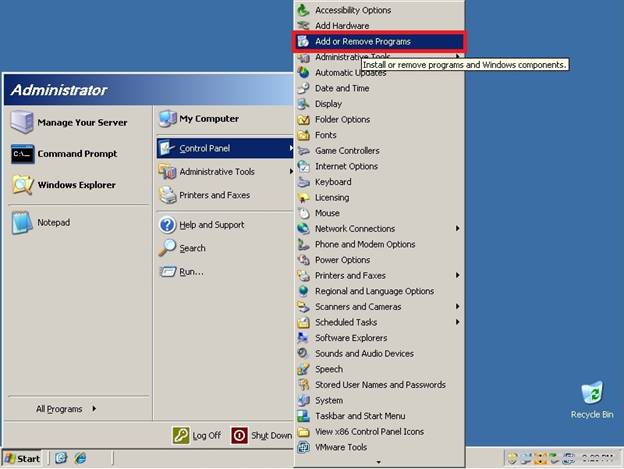
Fig. 01
On the Add or Remove Programs screen click last tab on the left side “Add/Remove Windows Components”
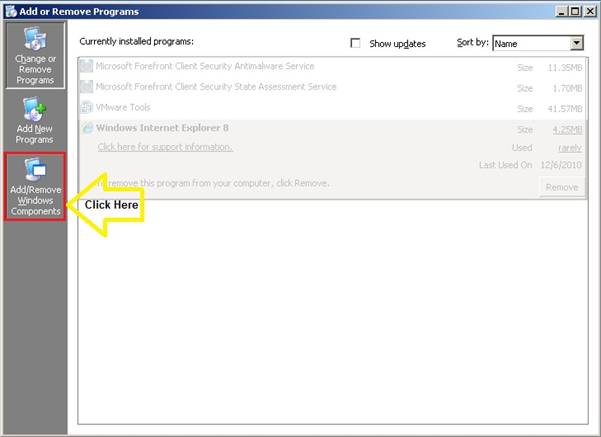
Fig. 02
A wizard will start to assist the installation procedure.
On the Windows Components Wizard screen select “Application Server” and click “Next”
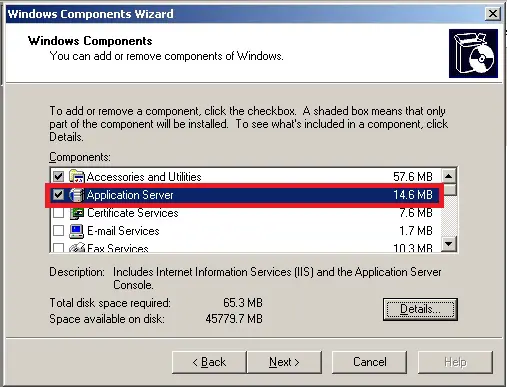
Fig. 03
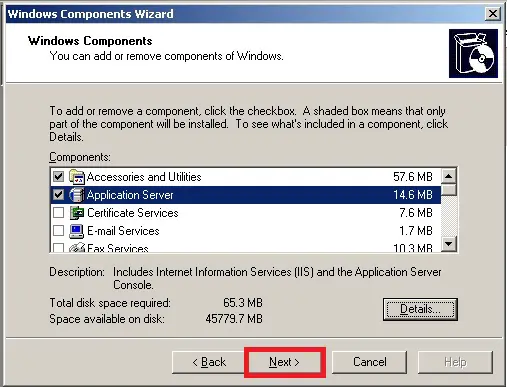
Fig.04
The installation will begin for IIS services.
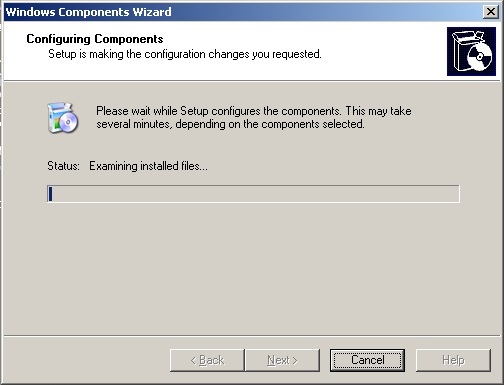
Fig. 05
Incase installer process asks for additional files located on any CD of Windows XP or Windows7, provide correct path of the directory or CD location by clicking browse button shown on your pop up screen
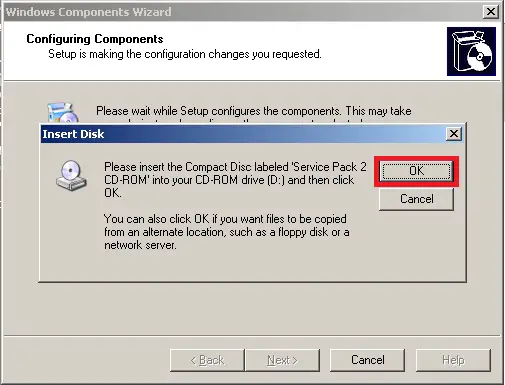
Fig. 06
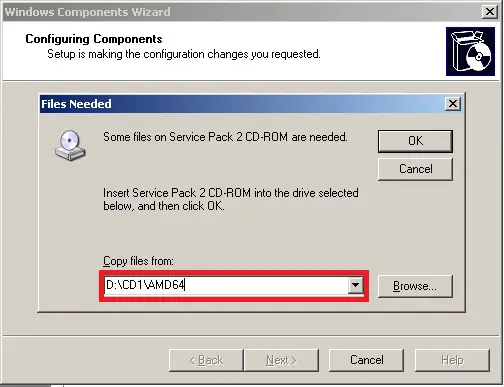
After providing the correct path click “OK” to continue installation
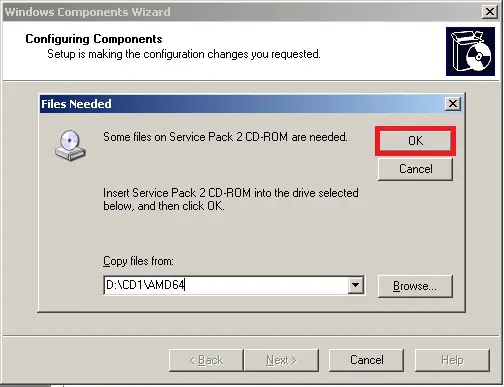
The installation will start for IIS
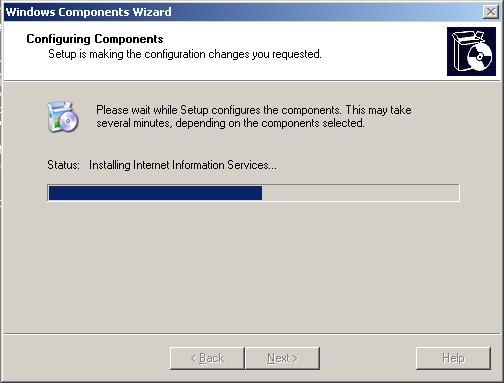
Once installation is completed click “Finish” to exit
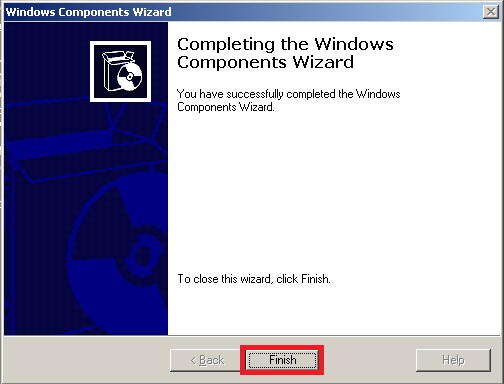
Now click “Active Directory Services” checkbox and click “Details” tab on the bottom right of window
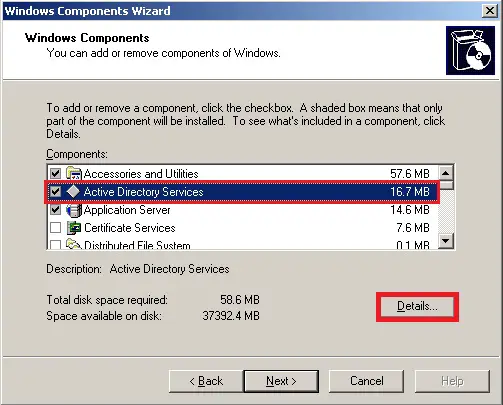
Select “ADAM” and click “Ok”
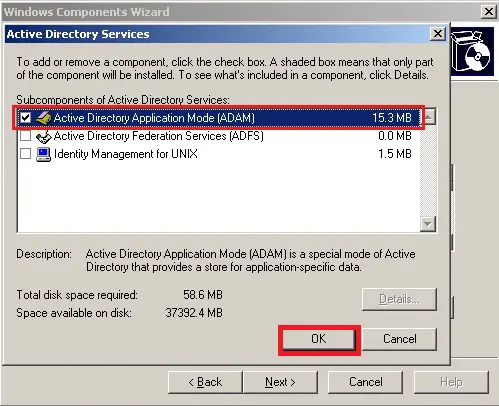
Now close “Add or Remove Programs”
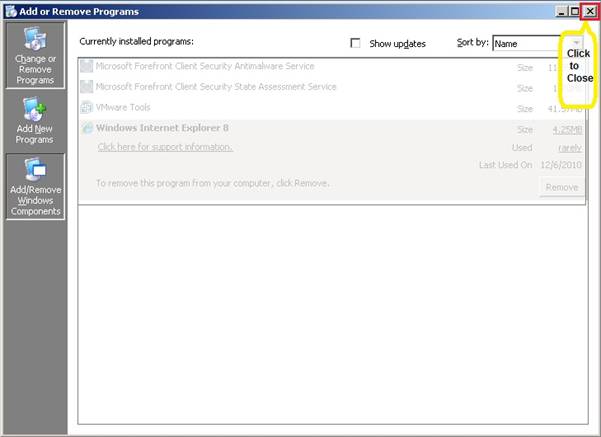
In order to install first we have to get a re-distributable installation package of dot Net Framework 2.0 from Microsoft’s website. You can download dot NET Framework 2.0 from this URL
After downloading the executable file on your desktop, double click on this file to initiate the installation procedure On the first screen it will ask for user’s consent to install dot Net Framework 2.0
Click “I have read and ACCEPT the terms of the license agreement”
You can leave the blue highlighted checkbox blank if you want as this is an optional one.
Then click “Install”
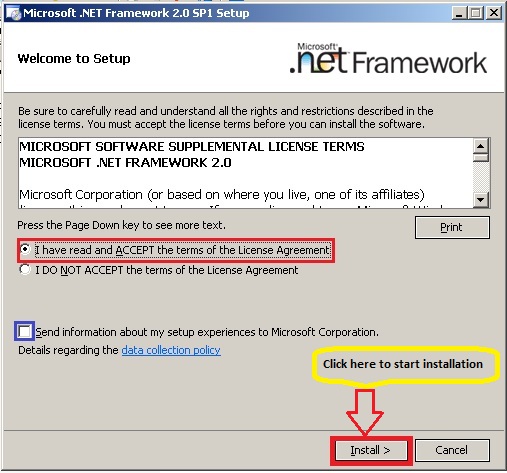
Fig.13
The Installation will start for dot NET framework 2.0
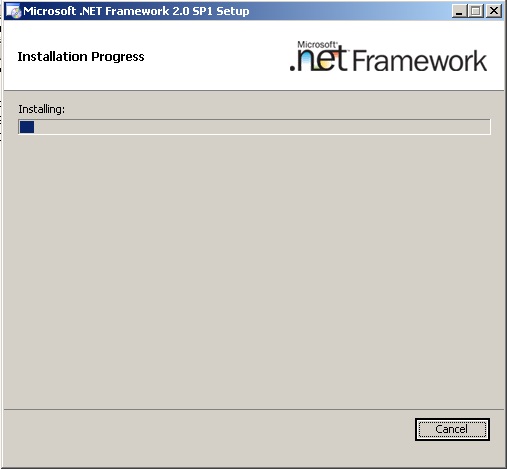
Fig.14
After the Installation is complete click “Exit” button to complete the installation process
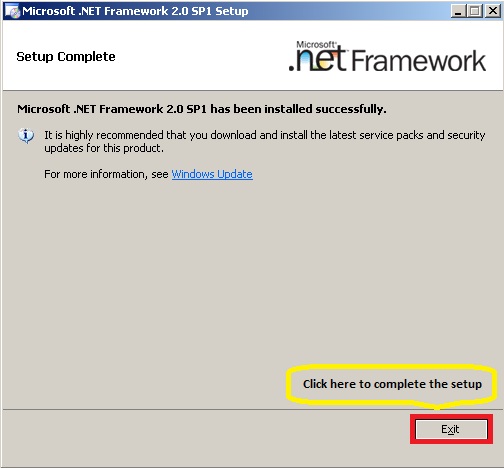
Fig.15
Microsoft Management Console (MMC) 3.0 generally comes pre-installed with X64bit systems however it can be downloaded from this URL if required
After downloading the executable file, double click on file to run the setup process
On the first screen of installation wizard, click “Next” to start installation of Windows Power Shell 1.0
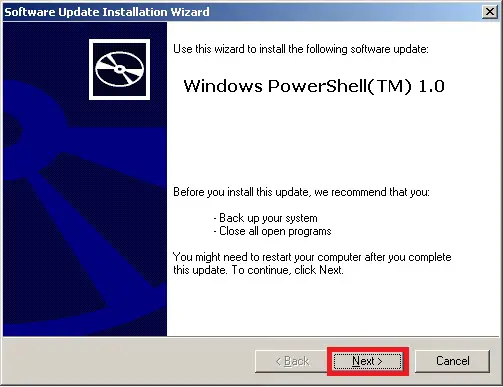
Fig. 16
On the next screen select “I Agree” radio button and click “Next”
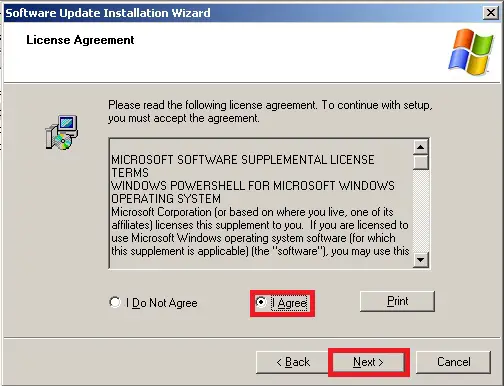
Fig. 17
The Installation will start
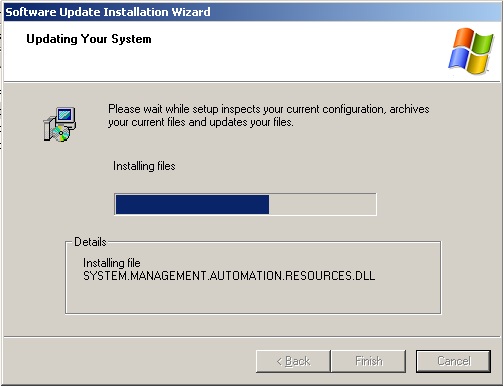
Fig.18
Once installation is completed click “Finish”
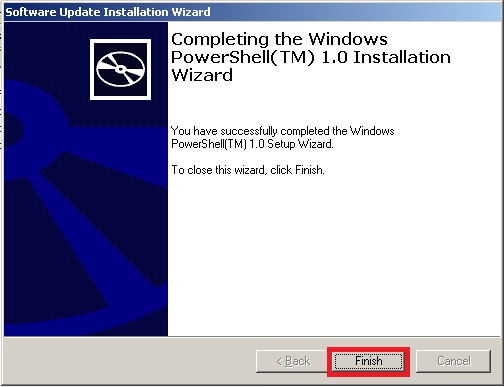
Fig.19
After installing all pre-requisites, restart the server for changes to take effect
Once the server is restarted, right click on “My Computer”, click “Properties”
Go to “Computer Name” tab and click “Change”
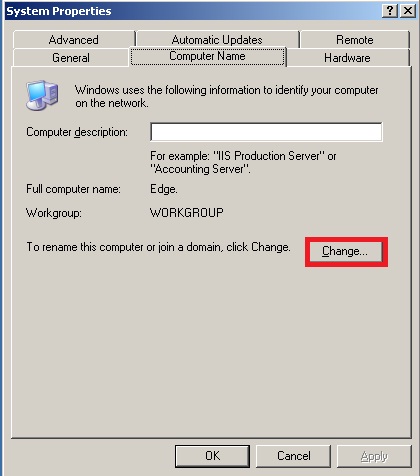
In the new pop up window click “More”
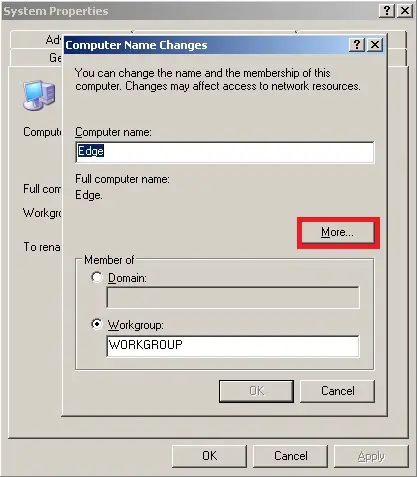
You will notice that the primary DNS suffix can be set from here
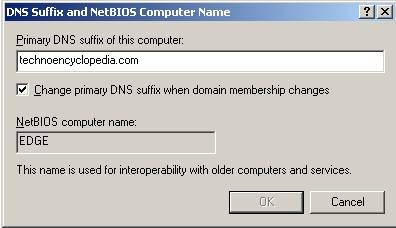
Type domain name as primary DNS Suffix and click “Ok”
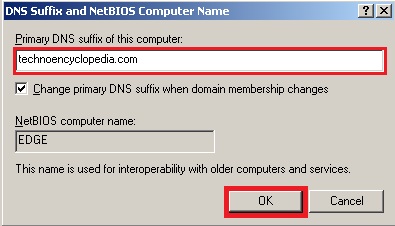
Now click Ok and restart the system for changes to take effect.
It is very important that you create an entry in the DNS server of your domain with the name and IP address of this EDGE.Since EDGE server is not part of domain and relies on ADAM service for connectivity to Domain controller, it is imperative that this machine is acknowledged in the system properly.
Installation of Exchange Server 2007 (EDGE Role)
Go to the installation source in DVD or where you have copied it after downloading.
Select “SETUP.EXE” which is generally found on the root of installation folder.
Double click this executable file to initiate the setup process.
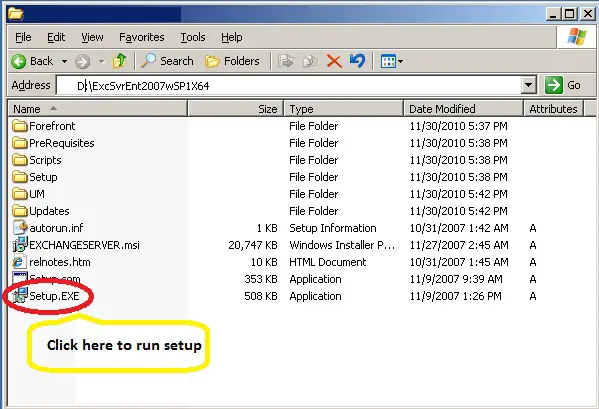
Fig.00
Exchange Server 2007 window will open up.
Here you can see that the initial 3 steps are grayed because we have already installed pre-requisites and the exchange setup has detected this too. If any of the first 3 options are not grey please review your installation steps and repeat the installation procedure for not installed components.
Now move to the first available option i.e. Step 4: Install Microsoft Exchange 2007 SP1 click this option to begin installation.
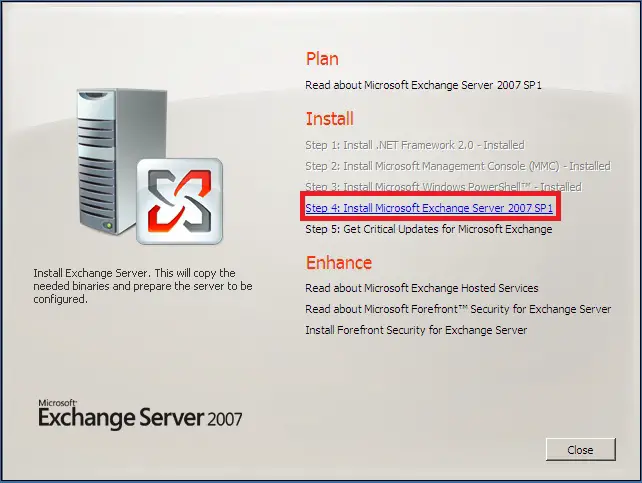
Fig. 20
On the introduction screen, setup will give you a brief description of the product.
Click “Next” to proceed.
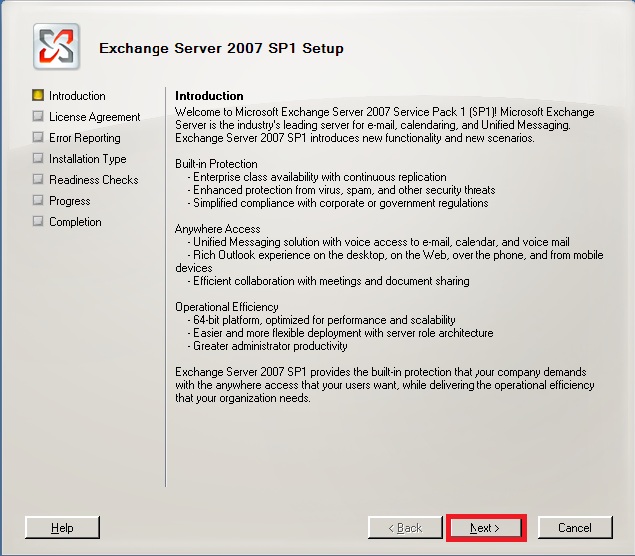
Fig. 21
On the license agreement screen you can read the license agreement, once satisfied with the documentation you can now click “I accept the terms in the license agreement” and click “Next” to proceed
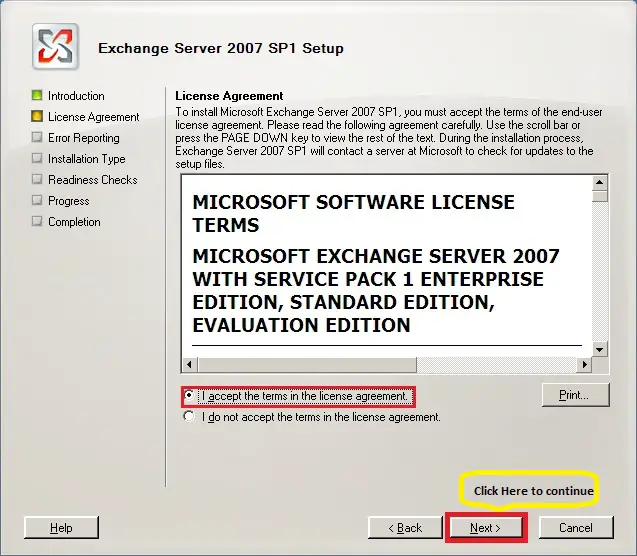
Fig. 22
Next screen will show Error Reporting feature for exchange. This feature can be disabled with no effect on installation however to get a feedback from user end, Microsoft recommends that you click “Yes” to proceed.
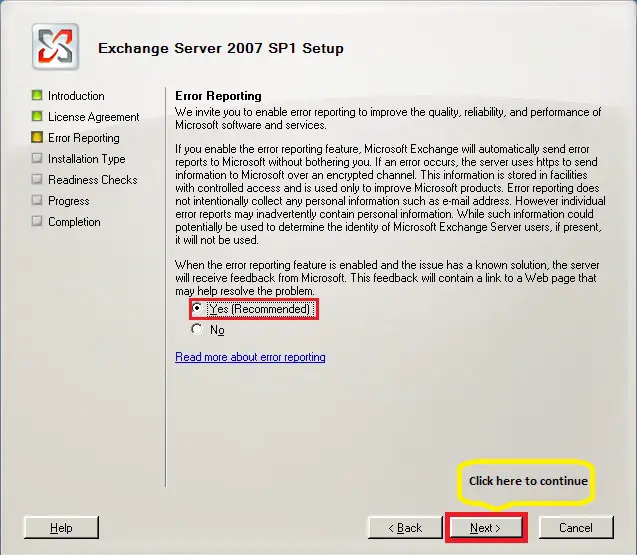
Fig. 23
On the “Installation Type” screen you have two options. Either you can go for typical installation which can install multiple roles on same box or you can select an inpidual role for this specific machine.
As the scope of this document is to install EDGE Server only so we will click on second option
“Custom Exchange Server Installation”
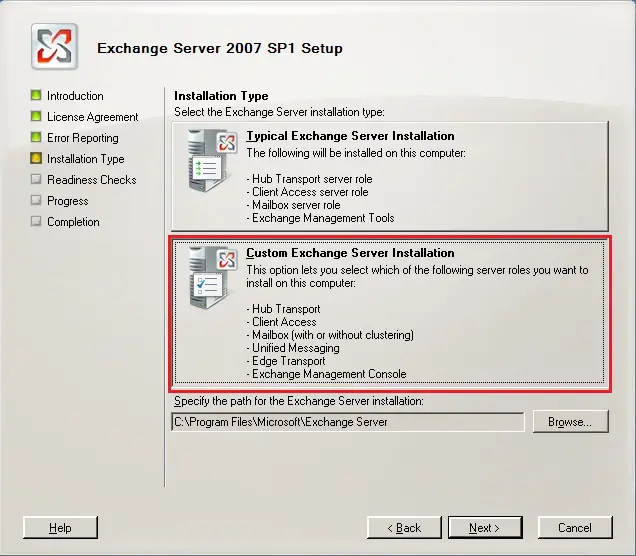
Fig. 24
After choosing the installation type click on “Browse” button to mention the installation path where you plan to put all the installation. In this example we are choosing a folder created for Edge installation on C drive.
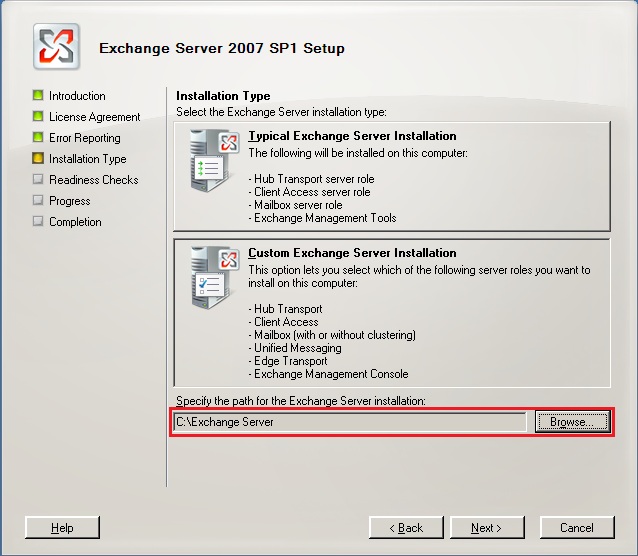
Fig. 25
Click “Next”
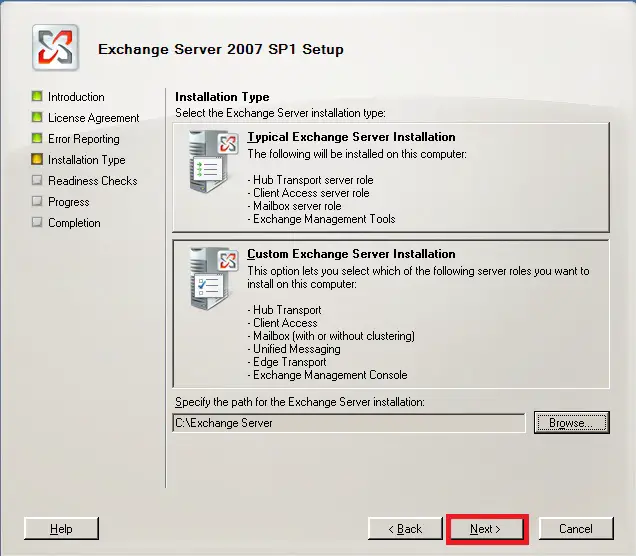
Select “EDGE Transport Server” role
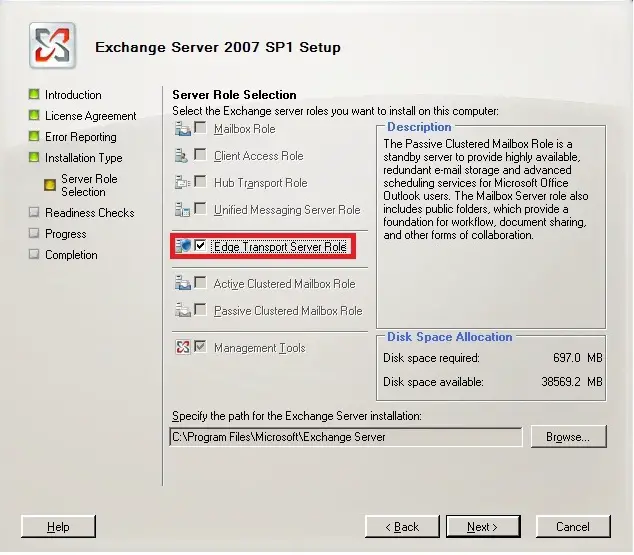
Before moving on make sure that enough free space is available and installation is going to be performed in the right folder as per plan.
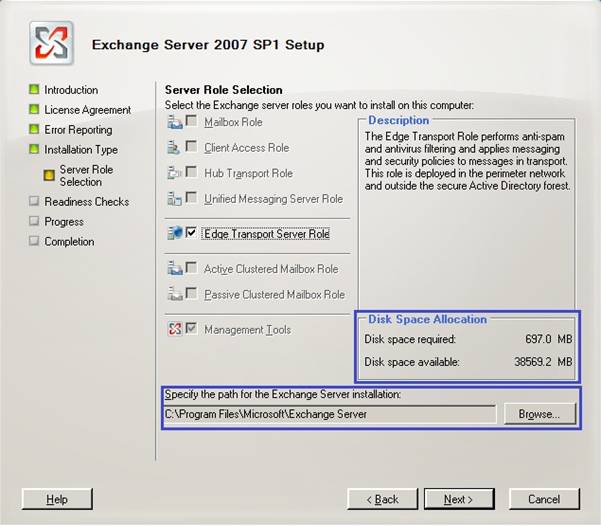
Click “Next” to proceed
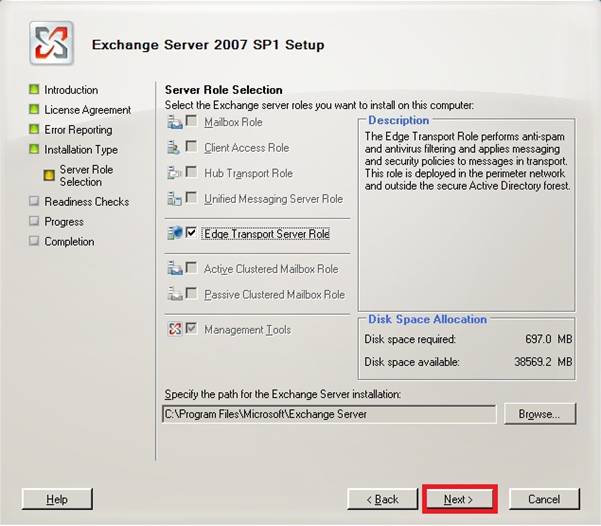
Once readiness check is completed click “Install” to start the installation procedure
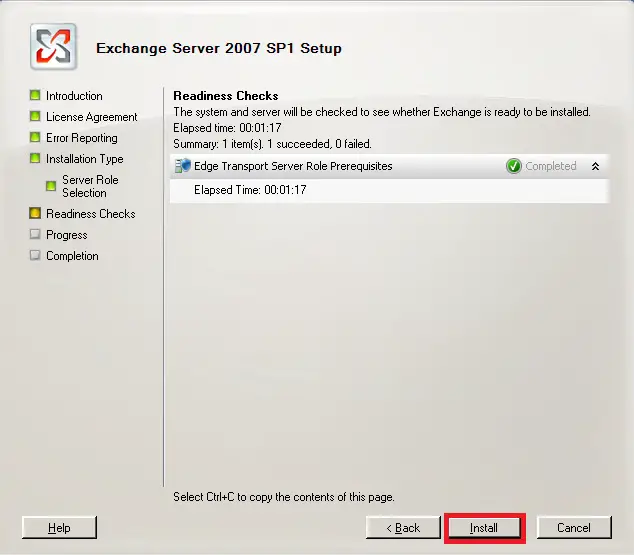
Installation of EDGE server and management tools will start
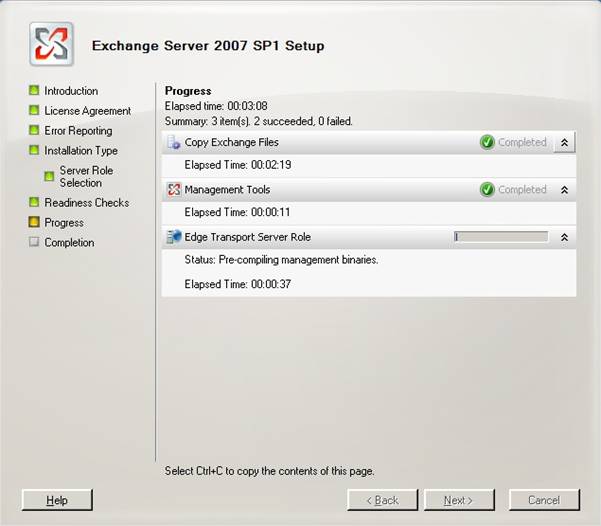
Edge Server installation will complete in a short whole as it does not have contact active directory or other exchange roles during installation.
Click “Finish” once installation is over
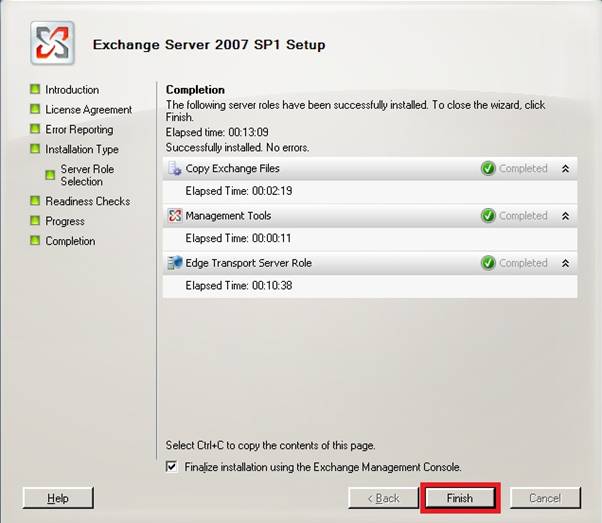
Click “Ok” to proceed

On the exchange installation window click “Close”
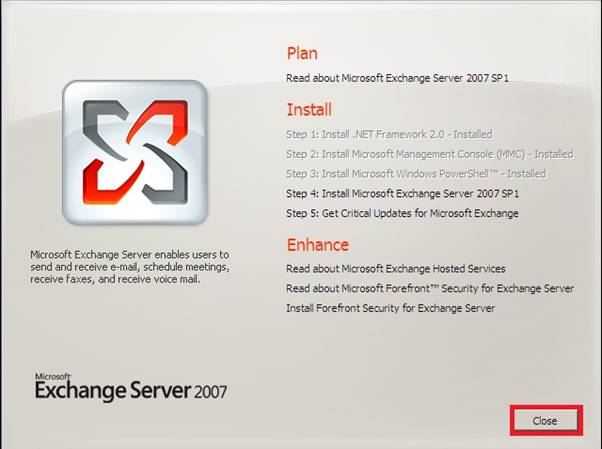
A new pop up will appear reminding about keeping the system up to date for critical updates.
Click “Yes”
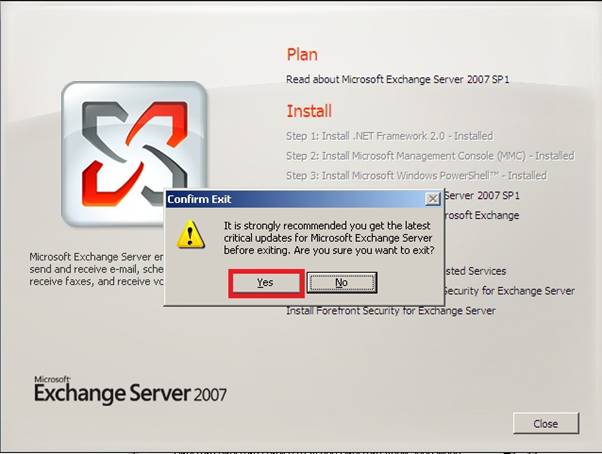
Now as advised by the set up wizard, restart the system.
Once the system comes back, go
Start > All Programs > Microsoft Exchange Server 2007 > Microsoft Management Console
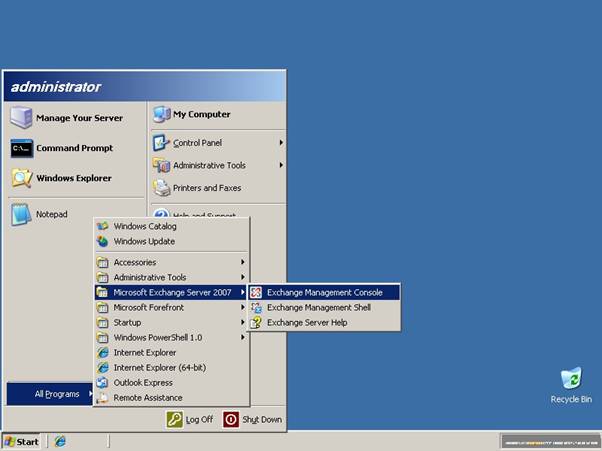
Microsoft Management Console will open up showing only one Exchange role (Edge) installed.
This is quite normal for an Edge server as it is entirely isolated from the remaining domain joined emailing system
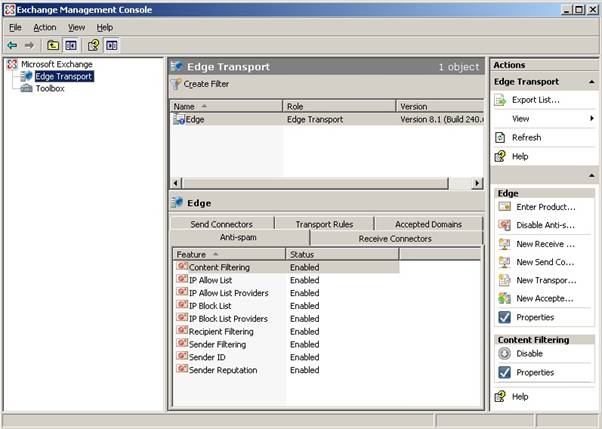
In order to configure an EDGE server properly we have to establish “EDGE Subscription” between EDGE and HUB servers.
Go to
Start > All Programs > Microsoft Exchange Server 2007 > Microsoft Management Shell
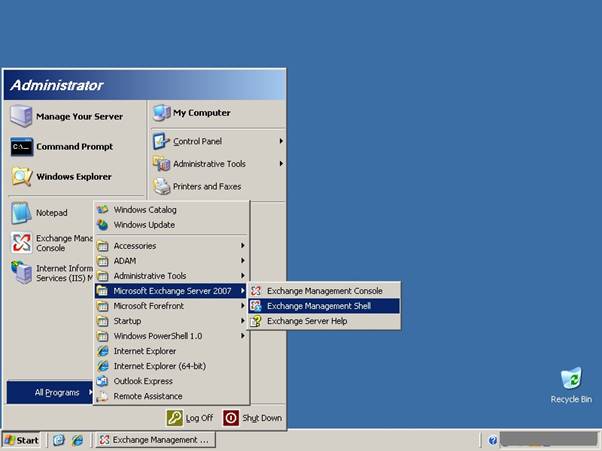
Exchange Shell prompt will open
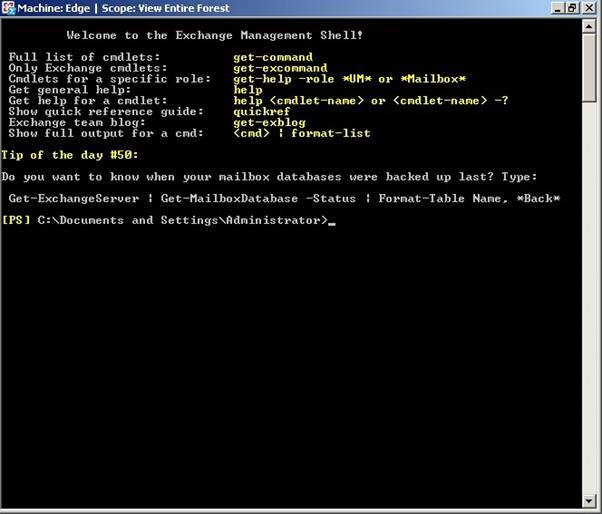
In the Shell prompt type this command supposing we are saving an edge subscribe [option file named “edge” in the “xml” format on C drive of the computer
New-EdgeSubscription –FileName “C:edge.xml” –Site “Default-First-Site-Name”
Click“Y” on the confirmation prompt
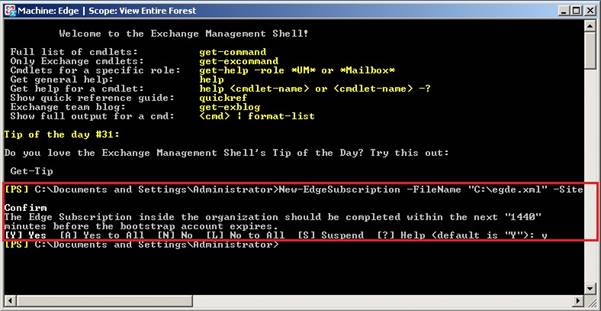
Now you will notice that a xml file with the name given in at shell prompt has been created on C drive
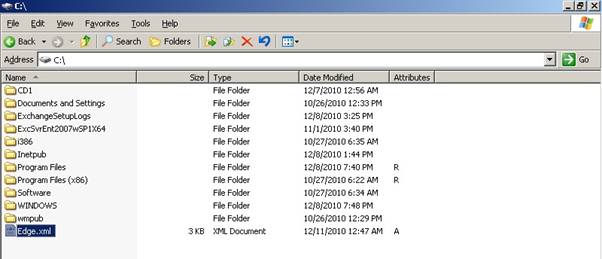
Now copy this file to the Hub Transport Server
We will now move to Hub Transport Server
Open Exchange Management Console on Hub server and click “New Edge Subscription”
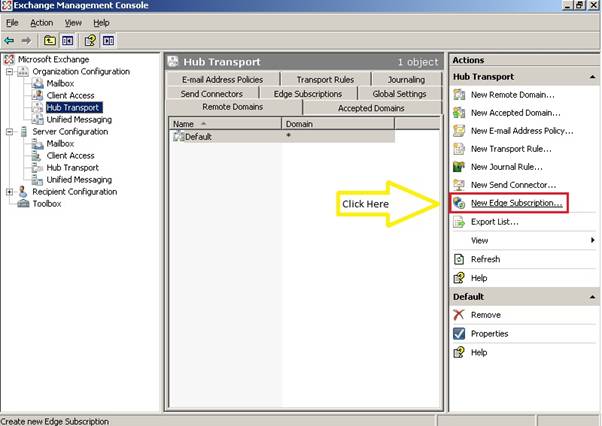
Select the location of Edge Subscription file copied from Edge Transport Server from Browse button
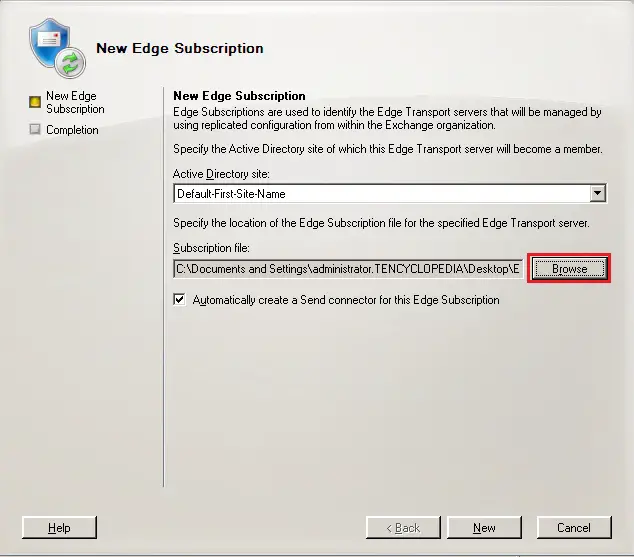
Click “New” to create the subscription
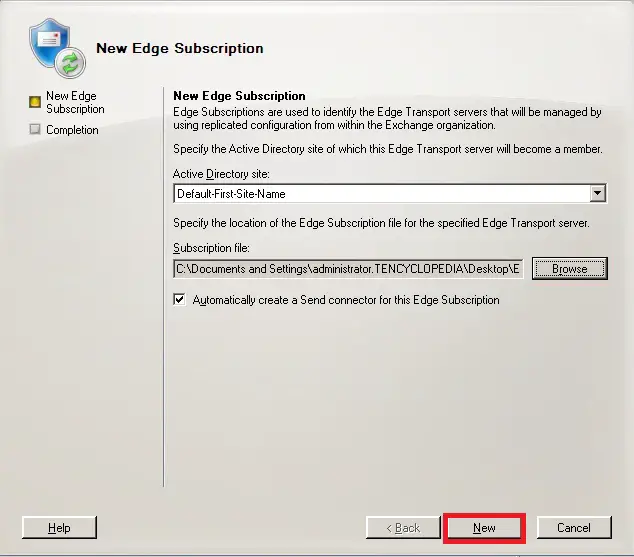
A very short time will be consumed to accomplish this task.
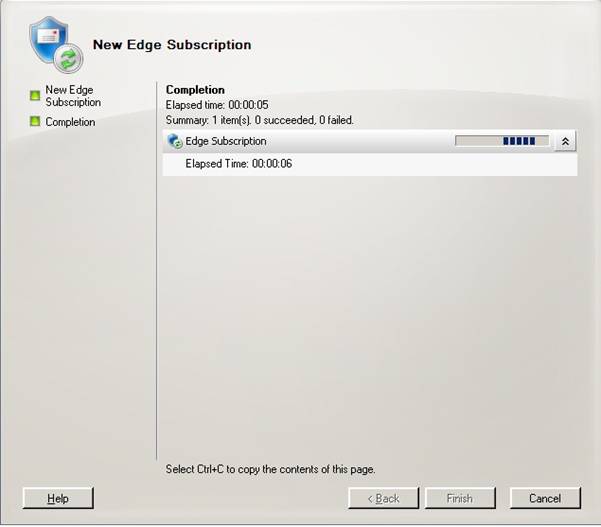
You will get the completion message with a warning.
Always make sure that all required ports are open at your network segment for EDGE Transport Server.
Click “Finish”
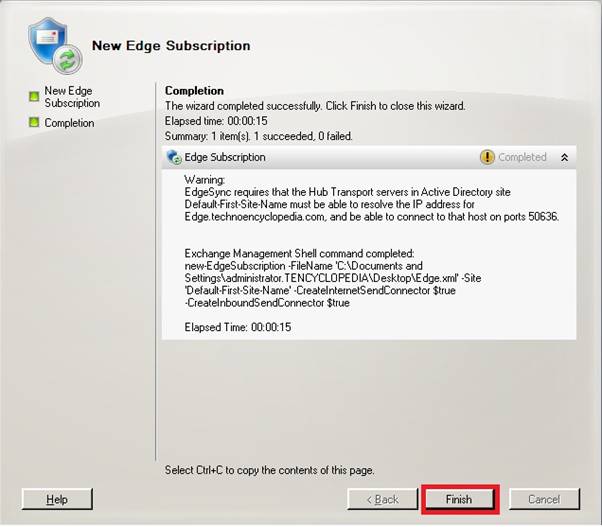
In the EDGE Subscription tab you will notice that a new EDGE Subscription has been formed.
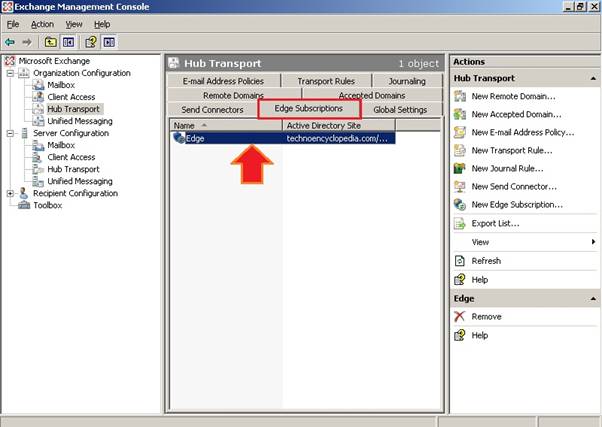
Now go to the Exchange Management Shell in HUB server and type this command
Start-EdgeSynchronization
This command is a good way to start the edge synchronization from the very first time instantly.
Otherwise this service runs every 4 hours to incorporate changes occurred on AD side with EDGE servers.
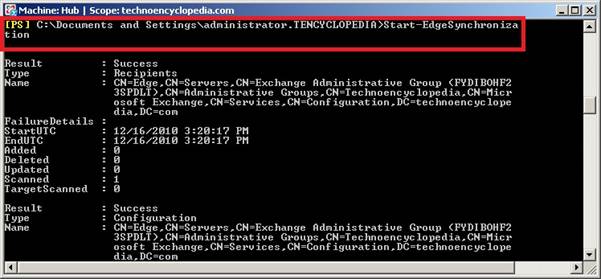
Now we will move back to EDGE server to verify the successful installation of EDGE server and correct configuration of Edge Subscription.
In the Exchange Management Console of EDGE Server you will notice that 2 send connectors have already been created.
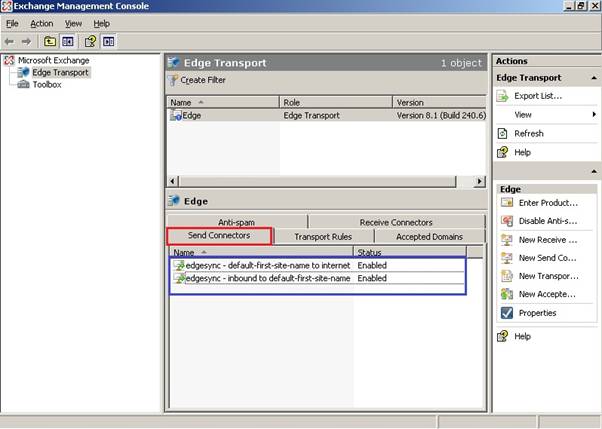
Under the receive connector there is an entry for “Default Internal Receive Connector”
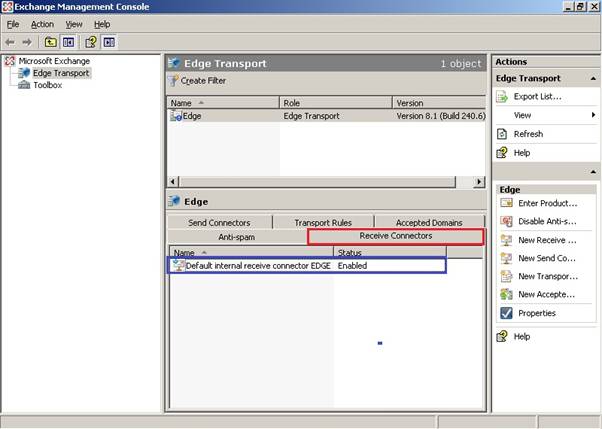
You default domain has been automatically configured under the “Accepted Domains” tab
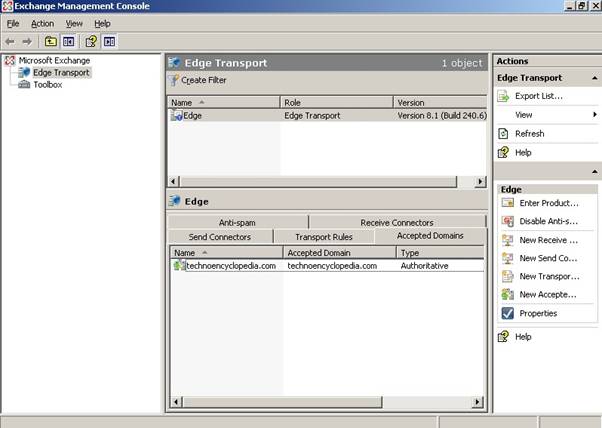
Conclusion
EDGE Server has been installed and its necessary configurations have been automatically set through EDGE Subscription.



